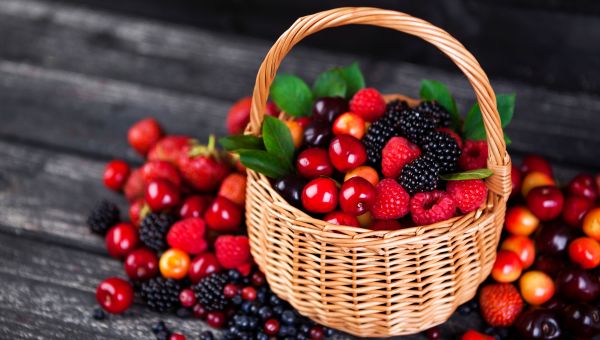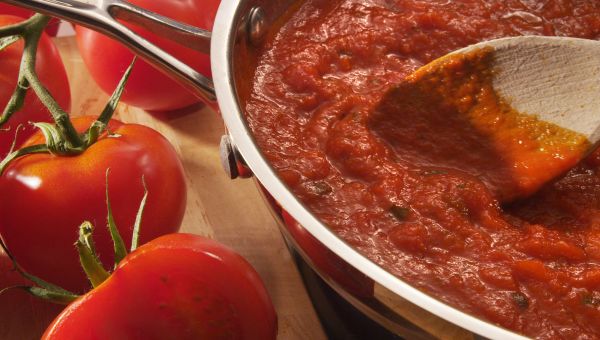5 colorful fruits and vegetables you need to eat right now
Pile your plate with a rainbow of vibrant colors for the biggest health boost.

Eating your fruits and veggies is important for good health—but so, too, is eating a wide variety. So if you’re a fan of green beans and not much else, it’s time to expand your culinary horizons. Fruits and veggies contain a powerful mix of nutrients called phytochemicals, which may help protect against a wide range of health conditions—and even boost brain health. Different colors mean different combinations of phytochemicals, which is why it’s important to eat an array of hues.
Here are the best foods to eat for a rainbow of color—and optimal health.

Choose: Tomatoes
Because they have: Lycopene
What it does: Red fruits and veggies get their color in part from the phytochemical lycopene, and tomatoes are loaded with it. Unlike nutrients in other foods, tomatoes release more lycopene when cooked; processed tomatoes are the number one source of lycopene in the US.
Research suggests that lycopene can help prevent cardiovascular disease and a number of cancers, including prostate, breast, lung, pancreatic and ovarian cancers, as well as a reduced risk of death from colorectal cancer. Other studies suggest lycopene may help treat asthma, and even help protect against sunburn.
It’s important to note that other research into lycopene and those same diseases have come up with no change in the risk. Still, it's important to include tomatoes in your diet for the minerals—such as potassium and manganese—and vitamins they provide, especially vitamins A and C.
You can also try: Pink grapefruit, watermelon, guava, red peppers

Choose: Sweet Potatoes
Because they have: Beta-carotene
What it does: The body converts beta-carotene into vitamin A—and one medium-size potato provides more than 400 percent of your daily vitamin A requirement. The orange flesh of sweet potatoes has more beta-carotene per serving than any other vegetable.
Vitamin A is critical for your vision since it helps your retina absorb light and supports the functioning of the cornea, which covers the front of your eyes. It also helps maintain the health of your heart, lungs and kidneys. Sweet potatoes are loaded with fiber, which can help prevent constipation.
You can also try: Carrots, peppers, mangos, summer squash

Choose: Blueberries
Because they have: Anthocyanins
What it does: Anthocyanins give food their blue or purple hue, but that’s not all. These phytochemicals are antioxidants, which may help prevent damage to cells.
Women who ate blueberries three times per week had a 32 percent lower risk of heart attacks, according to a study in which researchers analyzed the eating habits of 93,600 American women. Other compounds in blueberries help with healthy blood flow by dilating arteries.
You can also try: Eggplant, red grapes, blackberries, cherries

Choose: Garlic
Because it has: Allicin
What it does: You’re often told not to eat white foods, like white bread, white rice and refined table sugar. But some white foods are pretty good for you. Even potatoes, sometimes slammed for being empty calories, have more potassium than bananas.
But it’s garlic that’s the real powerhouse of white foods. Garlic contains an antioxidant called allicin. It also contains vitamin C and vitamin B6. There is some evidence that garlic can help protect against bowel cancer.
You can also try: Onions, leeks, shallots, cauliflower

Choose: Broccoli
Because it has: Fiber and more
What it does: Getting enough fiber in your diet is essential for regular bowel movements—and broccoli packs about 2.5 grams per serving. A fiber-rich diet can also help maintain bowel health, lower cholesterol and control blood sugar.
But broccoli’s benefits don’t stop there. Broccoli belongs to a group of vegetables known as cruciferous vegetables, which are rich in beta-carotene, eye-healthy lutein and zeaxanthin, vitamin C, vitamin E, vitamin K and folate.
What’s more, these veggies—especially broccoli—have sulfur-containing compounds that may fight a variety of cancers, such as prostate, colorectal, lung and breast. Be aware, however, that the research is mixed—while some studies suggest these compounds can reduce the risk of cancer, other studies don’t show a reduction of risk.
You can also try: Kale, arugula, Brussels sprouts
More On


video

article

slideshow


video


video
